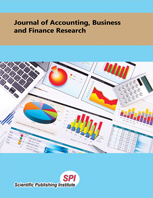The Impact of Government Debt and Foreign Investment on the Indonesian Economy: An ARDL Model Analysis
DOI:
https://doi.org/10.20448/2002.122.32.39Keywords:
Government debt, Foreign investment, Macroeconomics, Economic growth.Abstract
This study aims to obtain empirical evidence of the effect of government debt and foreign investment on Indonesia's economic growth. A number of macroeconomic variables are used to explain the influence between variables in both the short and long terms. The short-term effect is explained through the autoregressive distributed lag (ARDL) model, while the long-term effect is explained through the long-run bounds test. The ARDL model shows that government debt, inflation, exchange rates and the BI rate have a negative and significant effect on economic growth. Meanwhile, foreign investment has a positive and significant effect on economic growth. The results of the long-run bounds test show that the increase in government debt and foreign investment does not have a significant effect on economic growth. Meanwhile, inflation and exchange rates have a negative and significant effect on economic growth. This is contrary to the case with the BI rate, which has a positive and significant impact on economic growth. The increase in government debt in the long term has an impact on the decline in output and public consumption. This is the impact of an increase in the tax burden in the future.


